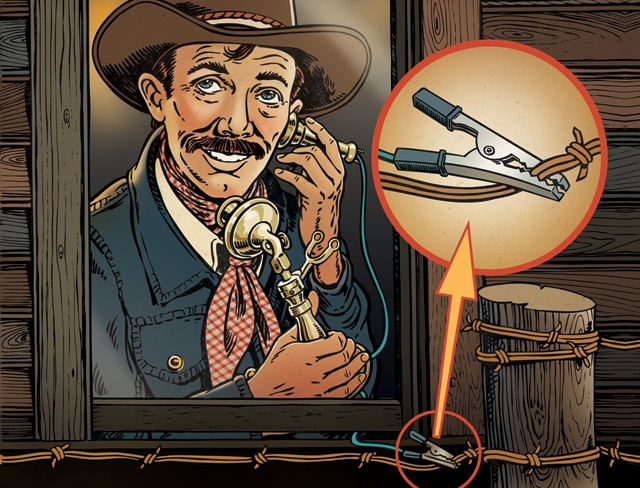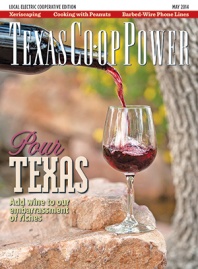On March 10, 1876, Alexander Graham Bell debuted the talking telegraph: the telephone. Bell earned two patents for his invention, and in 1877, he and two financial backers formed the Bell Telephone Company. But when Bell’s second patent expired in 1894, the technological landscape underwent a seismic shift. Suddenly, Bell wasn’t the only company that could legally operate telephone systems in the U.S.
Over the next decade, more than 6,000 independent telephone companies went into business, and the number of telephones in the country swelled from less than half a million to 3.3 million. Telephone systems, though, mostly served urban populations. Entrepreneurs steered clear of rural regions, where the installation of poles and phone wires carried exorbitant costs.
But near the turn of the 20th century, Great Plains settlers, including pioneers across Texas, weren’t wireless. They had a ready-made telephone transmission system in place: miles and miles of barbed-wire fences that kept ranchers’ cattle herds separate; prevented northern cattle herds from drifting on to grass-rich Panhandle spreads; and delineated ranch pasture from farm field, cow horse from plow horse.
Fences symbolized division—and connection. The process started on the pages of Montgomery Ward and Sears Roebuck & Co. catalogs, from which people could order telephones by mail. From there, the spark of ingenuity provided the missing link.
As described by Seguin-based historian and author Charley Eckhardt, electronic communication was now easily within grasp. Using a jawed, metal alligator clip, you could clamp the telephone wire from your house to the top wire on your barbed-wire pasture fence, making sure it connected to a property-line fence. Or, if the yard fence was connected to the pasture fence, you could clamp on there.
And so it went, house after house, fence after fence as rural families struck up the kind of conversation, sort of, that Bell imagined hearing when he began experimenting with telegraph-wire voice transmission in the early 1870s. “A rural telephone system that had no operators, no bills—and no long-distance charges—was born,” Eckhardt wrote in a 2008 online Texas Escapes story, a version of which originally appeared in The Tombstone Epitaph, a historical monthly Arizona newspaper.
Not surprisingly, the system had its flaws. Roaming cows and lovesick bulls broke many a telephone wire. And rain-soaked fence posts shorted out phones and lines. But discarded saloon bottles, as Eckhardt explains, were good glass insulators. Wooden pegs with drilled holes were whittled to fit inside broken bottlenecks, and the bottles were nailed to fence posts, with wire strung between the insulators.
There were other challenges. Without a central operator, each household had its own crank-phone ring, such as two longs and three shorts, to indicate incoming calls. A single long ring denoted an emergency, and everybody along the line would pick up the phone to hear the news. All telephones rang when calls were made. Eavesdropping prevailed, and the discussion of anything intimate was ill-advised, Eckhardt says.
But glitches and all, the system worked, surviving into the 1930s in some areas. After enabling farming and ranching to coexist, “barbed wire unwittingly became part of the nation’s budding telephone network,” Maryland-based author and historian David B. Sicilia wrote in a 1997 Inc. magazine article. “What kept crops and animals apart helped bring people together.”
In her 1958 book, “Light ’n Hitch: A Collection of Historical Writing Depicting Life on the High Plains,” author Laura V. Hamner praised barbed wire as both a “thorny barrier” and a link among Texas ranch women. “Equally important as the urgent message,” she wrote, “was the woman-talk which kept the barb wire humming—and which meant so much to the lonely ladies of the plains.”
——————–
Camille Wheeler is an Austin writer.


